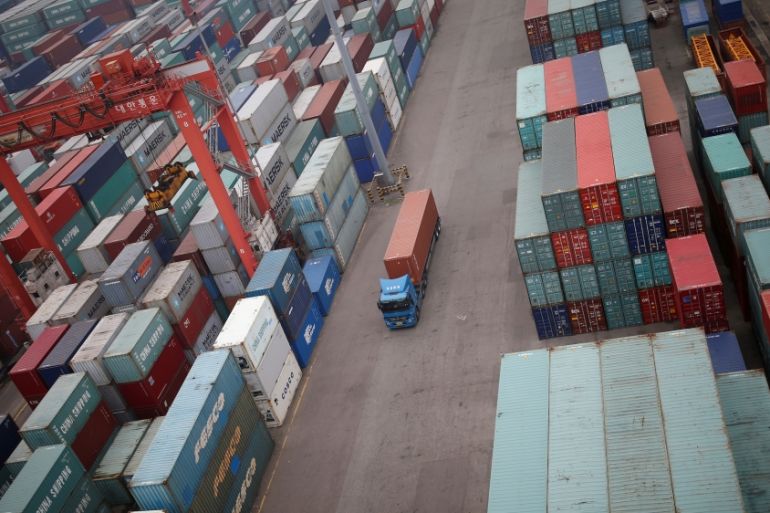South Korea’s economy returns to growth on government spending
GDP expanded by 1.1 percent in the second quarter following a 0.4 percent contraction in the previous three months.

South Korea’s economy swung back to growth in the second quarter, dodging a technical recession, although the expansion was mostly driven by government spending, suggesting the central bank may need to cut rates again to stoke demand.
Gross domestic product (GDP) grew by a seasonally adjusted 1.1 percent in the April-June period from the first quarter, central bank estimates showed, just beating the median forecast of 1.0 percent growth tipped in a Reuters survey of 12 economists.
Keep reading
list of 4 itemsBoeing hit with 32 whistleblower claims, as dead worker’s case reviewed
US imposes new sanctions on Iran after attack on Israel
A flash flood and a quiet sale highlight India’s Sikkim’s hydro problems
However, the Bank of Korea (BOK) estimates showed the economy would have contracted without increased government spending, following previous quarter’s surprise contraction.
“Details of the GDP data confirmed the economy has been dependant on government spending and support my expectation of another interest rate cut in the fourth quarter,” said Park Sang-hyun, economist at HI Investment & Securities.
Heavily reliant on exports of chips, smartphones, cars and ships, South Korea’s economy has been hit especially hard by the year-long United States-China trade dispute, which has hurt supply chains and global growth.
BOK estimates showed government spending contributed 1.3 percentage points to second-quarter GDP while private-sector activity presented a 0.2 percentage point drag as companies slashed investment due to the uncertain outlook.
Last week, the BOK cut interest rates for the first time in three years, earlier than market expectations for a cut in August, and trimmed its 2019 economic growth forecast to a decade low of 2.2 percent from the previous 2.5 percent.
South Korea’s economy shrank 0.4 percent in the first quarter due to delays in government spending as private investment also slowed.
On a year-on-year basis, Asia’s fourth-largest economy expanded 2.1 percent in the second quarter, compared with 2.0 percent growth forecast in the poll and 1.7 percent growth in the first quarter, the central bank estimated.
Merchandise exports returned to growth of 2.3 percent in the April-June period after a 3.2 percent contraction in the first, which was the worst reading since the final quarter of 2017.
But export prospects remain uncertain as Japan has curbed chip and display production materials shipments to South Korea, which Seoul says is related to a diplomatic row over the compensation of forced labour during World War Two.
The BOK said in a report to parliament on Tuesday that Japan’s export curbs were one of the top three risks to the domestic economy. Governor Lee Ju-yeol added that this year’s growth could dip further due to the curbs.
Analysts have downgraded their forecasts for 2019 growth, with some seeing growth falling short of two percent.